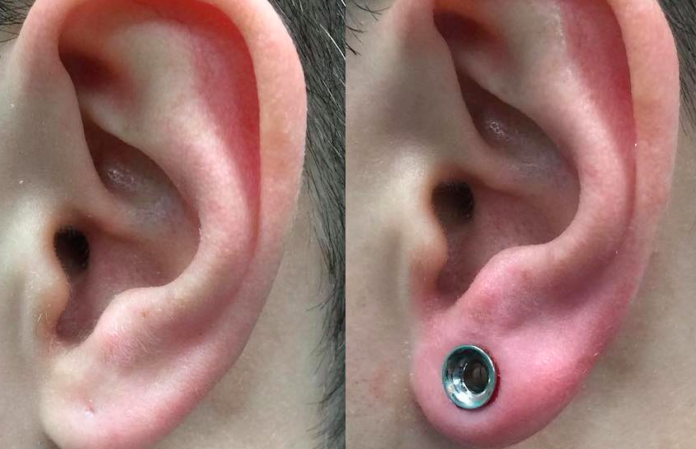Ear stretching is a beauty enhancement hack dating back thousands of years. It is an excellent addition that can up your taste and fashion if done right. With the right approach, including selecting quality EAR GAUGES, you can comfortably stretch the earlobe piecing and spot a striking look. Keep in mind that at some point, the ear gauging results in a permanent big hole. This means that if you remove the gauges, you’ll be left with a wide hole, only reversible through surgery.
If you’ve done your homework and decided ear stretching is a great addition to your regimen, read on for tips on getting started and improving the progress to realize the best results.
Professional Piercing
Professional piercing is a solid foundation you can’t afford to ignore. After the piercing, don’t be in haste. If you rush the process, you could end up with complications, including infections. If you tear the skin and keep going before the inflammation and pain subsides, your ear stretching endeavors can significantly turn for the worst. Let it heal, and go one size at a time. Stop if you experience pain; ideally, go at it for 4-6 weeks. Keeping the earlobes moisturized is also important, helping speed up the healing and stretching.
The Supplies
The top items you’ll need for the process are tapers, plugs, and lubricants.
- Tapers: They are the spiky pieces inserted in the piercing to stretch out the skin. The tapers come in varying sizes, referred to as gauges, which determine how much you can stretch the piercing. The main options are acrylic and steel tapers. Steel tapers are the most preferred since they easily slide through your piercing. However, they tend to be a bit pricier than the acrylic option. Don’t let the price be the determining factor, though, since low-quality tapers can cause problems. For instance, they could irritate your ear, slowing the healing process and your quest to stretch it further within a reasonable period.
- Plugs: These are the round and stylish jewelry you wear to keep the earlobe trenched. The plugs are commonly available materials, including:
Steel: Durable and comfortable
Organic: Includes polished stone, glass, and wood, among other non-artificial materials. The main advantage is their friendly nature, which is less likely to cause allergic reactions or irritation.
Titanium: Durable, much like steel, but much lighter and less likely to cause an irritation
Silicone: Not the most favorable due to its hypoallergenic nature. Nonetheless, with routine cleaning, it is an effective plug.
- Lubricant: Lubricant helps the taper slide through your piercing. You can easily find lubricants in your local jewelry stores. As you shop, avoiding options with additives and other chemicals is recommended. This will help lower the chances of allergic reactions. Plant-based options like coconut oil are ideal options.
With the above materials and professional piercing, your EAR GAUGES is on to a great start. As you care for the ears during the process, ensure your materials and hands are sterilized. Also, take measures to avoid having items stuck in the piercing, especially which can pull and stretch it, as it can affect the healing process. You may notice a faint odor; don’t panic. The smell is due to the dead cells. However, if it is strong or persists even after washing, seek immediate medical attention.





























